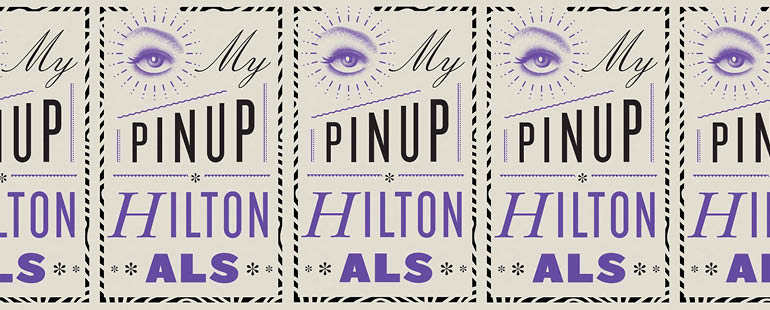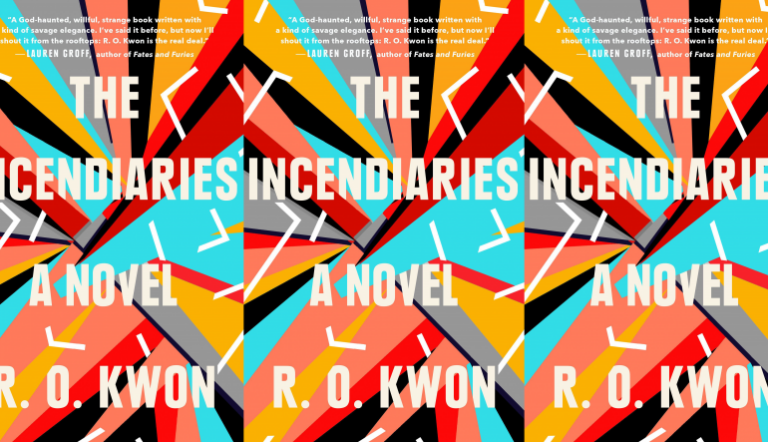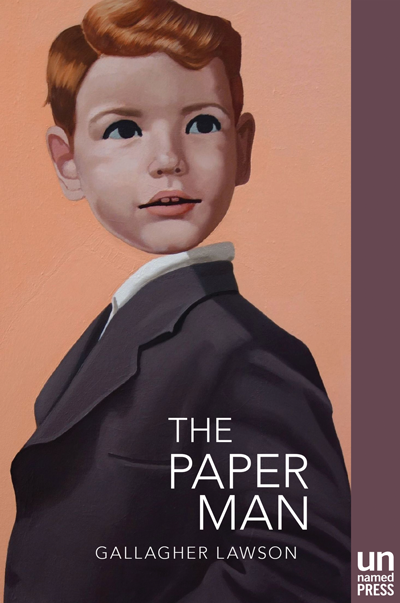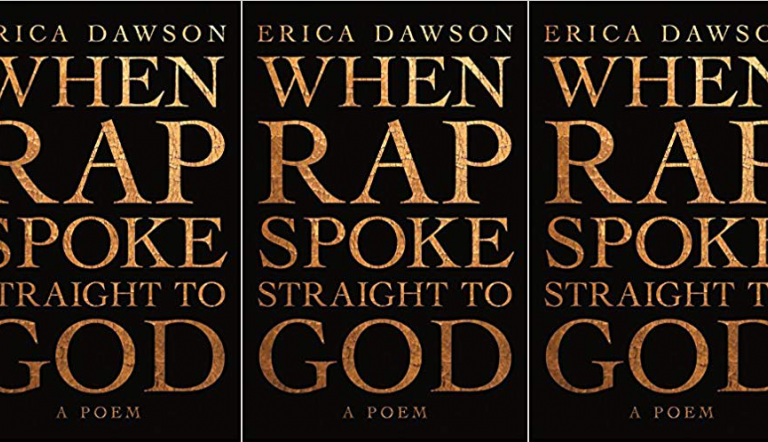Prince and the Remaking of Image in Hilton Als’s My Pinup

My Pinup
Hilton Als
New Directions | November 1, 2022
Some pairings of critic and artist seem especially happy ones, and the news of a book on Prince by Hilton Als had me hovering over the “pre-order now” button. Who could be a better guide to Prince—to his polymorphous sexuality, his gleeful dismantling of the racial compartmentalization of American popular music, his seemingly effortless sprezzatura as a performer—than the author of White Girls? My Pinup does not disappoint. Unless the typescript of an unpublished review of Dirty Mind (1980) turns up in James Baldwin’s papers at the Schomburg Center, this slim volume may be the most interesting writing on Prince we will ever see.
It is not, for the most part, new material. Additional detail about Als’s meeting Prince at the St. Louis, MO, show of the Musicology tour has been added (or restored), but most of My Pinup appeared as “I Am Your Conscious, I Am Your Love” in the December 2012 issue of Harper’s Magazine. That the essay has not been adjusted to acknowledge Prince’s death in 2016 makes for some jarring moments—referring to Paisley Park, the estate and recording studio Prince had built in Minneapolis, MO, as the place “where he lived until recently” would have been an innocuous observation in 2012, but lands oddly now, especially since Prince died at Paisley Park. Nonetheless, what Als says of Prince’s music still illuminates and convinces:
In general, artists forge one of two career paths for themselves early on. Either they reject the world in order to become the romantic hero of their own imagining, or they embrace the real, transmuting what they find in the streets and in people’s homes into tales an audience can readily identify with. Growing up, Prince did both. And he used urban black music and black gay attitude as it filtered through and got mixed up in his predominantly white Midwestern environment to express his quintessentially American self. And it was this self—which, visually, at least, he played as male and female, gay and straight, black and white—that Prince used to remake black music in his own image.
Even more interesting than Als’s analysis of Prince’s body of work, though, is his exploration of how that body of work wound its way into his own life. In a previous book, Alice Neel, Uptown (2017), Als wrote of his decision to write essays rather than fiction: “In an essay, your story could include your actual story and even more stories; you could collapse time and chronology and introduce other stories.” Those for whom encounters with works of art are foundational for their lives know what Als means: a vivid response to others’ stories can become a vein in one’s own.
Als (born 1960) has a relationship to the music of Prince (born 1958) that goes back to when both of them were young, before Prince was an MTV icon, back to “the black queens who lip-synched to ‘Sister’ while voguing near the Hudson River in the clear light of night.” The platinum-selling Prince of the mid-1980s interested him less (“I stopped dancing when frat boys pumped their fists in the air to ‘1999’”). “Why did he want to betray the colored queer in himself?” Als wonders. Als rediscovered Prince with Lovesexy (1988): “The cover told us everything: it was Prince naked, his hair feathered, one hand shielding a beautiful nipple.” And then, the opportunity to interview Prince at a 2004 show in St. Louis brought Als into the purple presence itself.
Als sets the scene of the dressing room, not missing a detail: “And as if to complement the room—or have the room complement him—Prince was in black and purple, too. He was shoeless, dressed in dark tropical wool trousers and a black vest with wide lapels.” Prince discourses on his fight with his record company over ownership of master recordings, on filmmaking, on Joni Mitchell. Prince chooses exactly the false eyelash he wants (“‘Put on number 14’”). Prince comments on his and Als’s shared blackness: “‘It’s not as if they’re willing to give it up to us because we’re us,’ Prince said to me, rather conspiratorially. I took ‘us’ to mean black people. ‘We’ve always had to work that way. The question is: Where’s our forty acres and a mule?’” Prince introduces Als to funk legend Larry Graham and his wife, who want to talk to Als about Jesus. And then, amazingly, Prince makes an offer: Would Als like to move to Paisley Park and write a book about Prince?
Als declines, for a reason many will recognize: there is someone he doesn’t want to leave. “I knew that if I went to Minneapolis, I would never come back,” Als writes. “After Nashville, Prince, I returned to New York, and to the man whose girlfriend I wanted to be. I wanted to be his Dorothy Parker, and his O Sister.” A lovely irony blooms in Als using Prince songs to explain why he turned Prince down: “If I Was Your Girlfriend” from Sign o’ the Times (1987), with its question, “Would you run to me if somebody hurt you even if that somebody was me?”; “The Ballad of Dorothy Parker,” also from Sign o’ the Times, about a waitress who loves Joni Mitchell and offers the singer a refuge from “a violent room”; “Sister,” from Dirty Mind, with its plea, “Oh, sister / Don’t put me on the street again / Oh, sister / I just want to be your friend.”
The irony deepens as we learn that the man in New York to whom Als returns drew his attention by resembling Prince:
I saw his skin color. It was like yours, Prince. I saw his thinness. It was like yours, Prince. I saw his difference. It was like yours, Prince. Was I in love with him or with you when I met you backstage in St. Louis or saw you in Texas? . . . But already he was you, Prince, in my mind. He had the same coloring, and the same loneliness I wanted to fill with my admiration. I couldn’t love him enough. We were colored boys together. There is not enough of that in the world, Prince—but you know that.
This may be the moment the essay most fulfills its subtitle, “A Paean to Prince.” A chance to inhabit a possibility Prince’s songs have enabled Als to envision turns out to be even more powerfully attractive than being with Prince himself—a telling instance of the ways the bodies of artistic work we engage with reincarnate themselves in the choices we make.
This choice has no conventional happily-ever-after ending. In the essay’s closing pages, Als realizes he cannot be his unnamed friend’s Dorothy Parker (by this point, the name signifies not only the waitress who offers respite and harbor in Prince’s song but the Algonquin wit who, like Als himself, lit up the pages of the New Yorker), but Als introduces him to a woman Als suspects can be, and Als turns out to be right.
She loved you too, Prince, but I don’t know if she saw the Prince in him that I saw; nevertheless, that didn’t preclude her loving you, Prince, or him. We were all colored boys together, and she loved, as a white girl, being outside what she felt about our difference from her and her not-difference from her; our coloredness and complicated boyness were what she loved looking at onstage.
This story, too, lacks a conventionally happy ending: “The houselights came up. She died.” But the story could certainly be a novel, or a film like Mrs. Parker and the Vicious Circle (1994), which Als and his friend went to see; as an essay, condensed into a few pages, it hits like a hammer. Brief as it is, My Pinup is the kind of journalism that takes a running leap and lands in the literary canon.


